Introduction to Zucchini Cultivation
Zucchini (Cucurbita pepo), also known as courgette, is a horticultural crop highly valued in gastronomy for its versatility and nutritional value. Its cultivation is relatively easy and adapts to various climatic conditions, making it a popular choice both in home gardens and commercial productions. This article provides a comprehensive guide on zucchini cultivation management, from soil preparation to harvest and post-harvest management, aiming to optimize production and fruit quality.
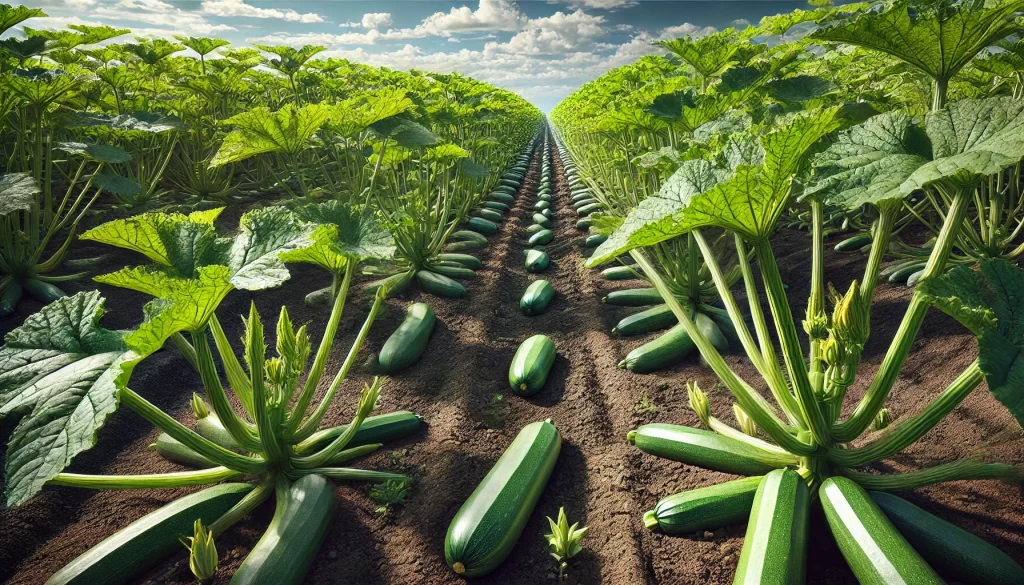
Site Selection and Soil Preparation
Ideal Climatic Conditions
Zucchini thrives in temperate and warm climates, with optimal temperatures between 18°C and 25°C. It is sensitive to frost and extreme temperatures, so it is important to choose the right time for planting. Zucchini requires full sun exposure for proper plant development and fruit formation.
Soil Selection
Zucchini prefers fertile, well-drained soils rich in organic matter. Loamy-sandy or loamy soils with a pH of 6.0 to 7.5 are ideal. It is essential to avoid compacted or poorly drained soils, as they can cause root rot problems.
Soil Preparation
- Deep Tillage: Perform deep tillage to improve soil structure and facilitate root development.
- Incorporation of Organic Matter: Add compost or well-decomposed manure to improve soil fertility and water retention capacity.
- Adequate Drainage: Ensure proper drainage to avoid waterlogging, which can negatively affect plant development.
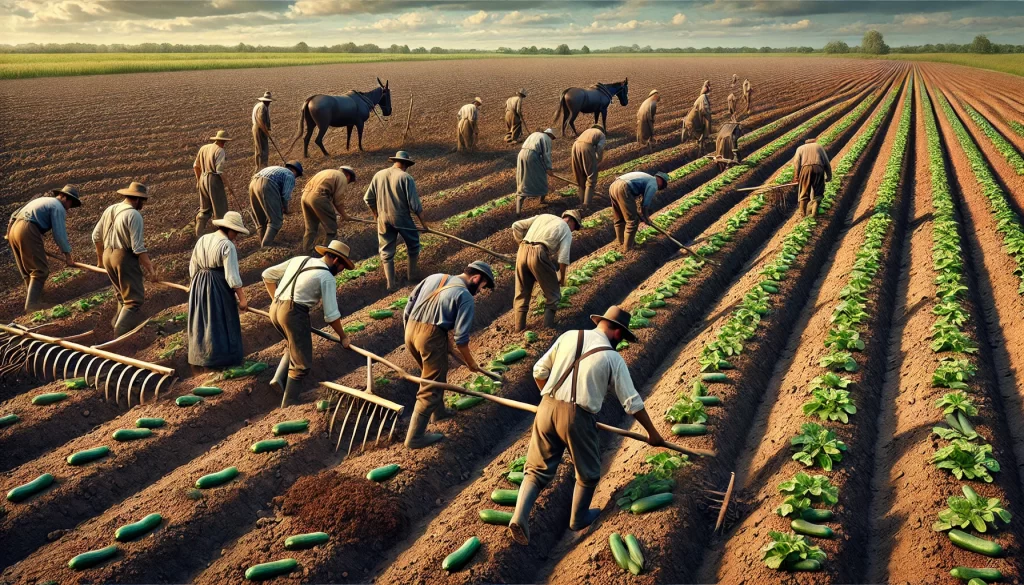
Zucchini Planting and Transplanting
Planting Methods
Zucchini can be planted directly in the field or through the transplanting of seedlings produced in nurseries. Direct seeding is common in large-scale productions, while transplanting is used when greater control over initial growth conditions is desired.
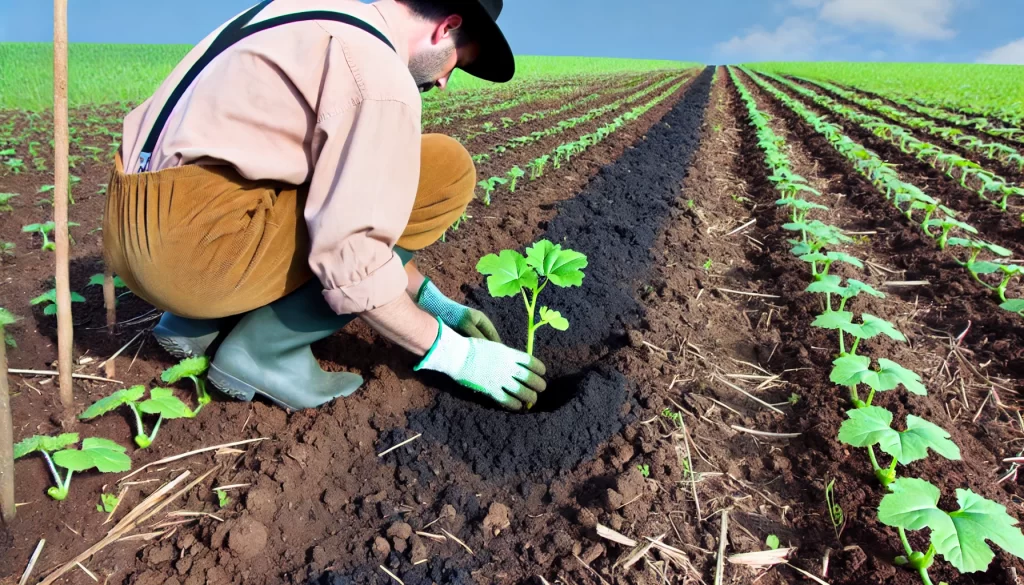
Seed Preparation
- Seed Selection: Use certified seeds to ensure good germination and uniform crop development.
- Seed Treatment: Seeds can be treated with fungicides to prevent diseases during germination.
Direct Seeding
- Seeding Depth: Seeds should be planted at a depth of 2 to 3 cm, with a spacing of 50 to 60 cm between plants and 100 to 120 cm between rows.
- Seeding Conditions: Seeding should be done in warm, moist soils to promote rapid and uniform germination.
Seedling Transplanting
- Seedling Production: Seeds are sown in germination trays under controlled conditions. Seedlings are ready for transplanting to the field when they reach a height of 10 to 15 cm.
- Field Transplanting: Transplant during the cooler hours of the day and ensure immediate watering to reduce water stress.
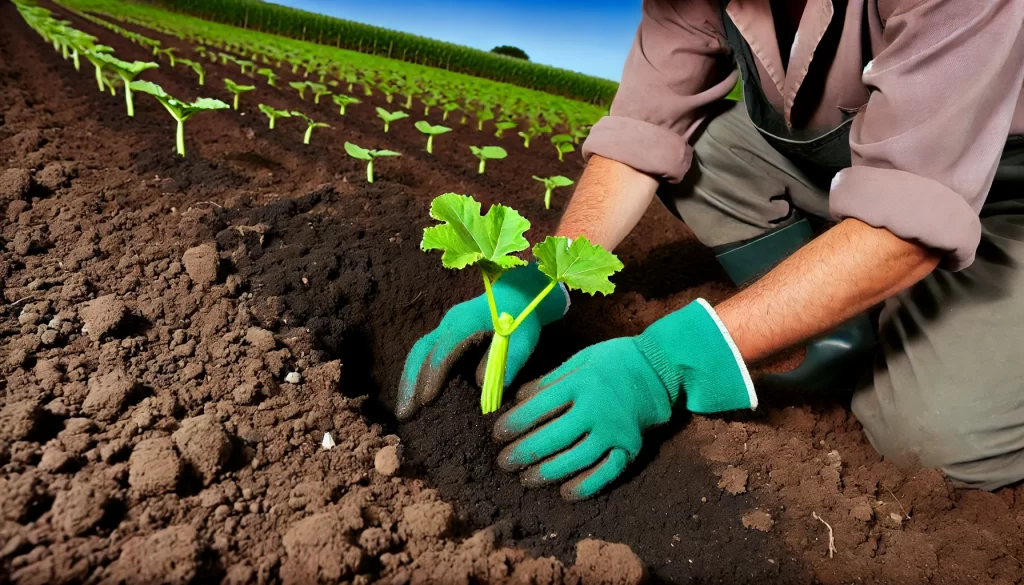
Watering and Irrigation Management
Zucchini Water Requirements
Watering is essential for zucchini development, especially during the flowering and fruit development stages. The plant requires a constant water supply, but without excess that could cause waterlogging or diseases.
- Establishment: Moderate watering to ensure seedling germination and establishment.
- Vegetative Growth: Maintain regular watering to promote foliage development and flowering.
- Fruit Development: Increase watering frequency during fruit formation and growth to ensure good size and quality.
Irrigation Systems
- Drip Irrigation: This is the most efficient system for zucchini cultivation, as it delivers water directly to the root zone, minimizing evaporation loss.
- Sprinkler Irrigation: Although less efficient, it is used in large fields, but care must be taken to avoid over-wetting the leaves and flowers, which could encourage disease.

Zucchini Fertilization
Nutritional Requirements
Zucchini is nutrient-demanding, especially in nitrogen, phosphorus, and potassium. A well-balanced fertilization plan is essential to ensure vigorous growth and high fruit production.
- Nitrogen (N): Promotes vegetative growth and leaf formation.
- Phosphorus (P): Crucial for root development and flowering.
- Potassium (K): Enhances fruit quality, disease resistance, and storage capacity.
Fertilization Plan
- Base Fertilization: Incorporate an NPK mix before planting or transplanting to prepare the soil.
- Topdressing: Apply fertilizers at various stages of the crop cycle, adjusting doses according to soil analysis and plant development.
- Foliar Fertilization: Use foliar applications of micronutrients to correct specific deficiencies and improve crop performance.

Pest and Disease Management
Common Pests
Pest management is crucial to maintaining the health of zucchini plants and ensuring the production of high-quality fruits. The most common pests include:
- Aphids: Affect young shoots and can transmit viral diseases.
- Whitefly: Feeds on leaf sap, causing plant weakening and transmitting diseases.
Control Strategies
- Regular Monitoring: Inspect plants regularly to detect pests in a timely manner.
- Biological Control: Introduce natural predators such as ladybugs and parasitic wasps.
- Insecticide Application: Use specific products following technical recommendations to minimize environmental impact and avoid resistance.
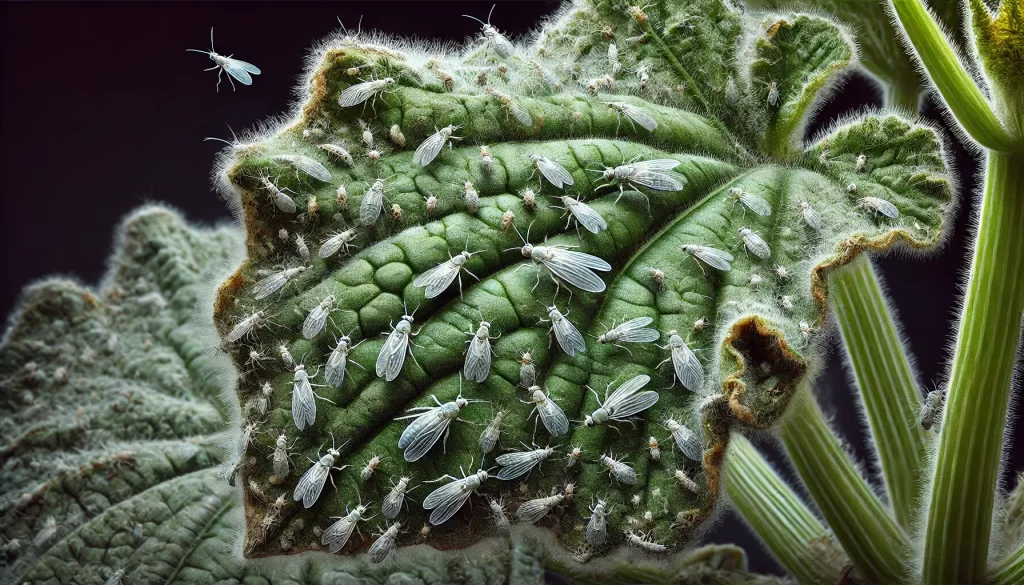
Common Diseases
Diseases can significantly affect zucchini crop productivity. The most common diseases include:
- Powdery Mildew (Erysiphe cichoracearum): A fungus that affects leaves, causing white spots that can reduce photosynthesis and plant vigor.
- Anthracnose (Colletotrichum spp.): A disease that causes dark spots on fruits and leaves, reducing quality and yield.
Control Strategies
- Sanitary Management: Remove affected parts of the plants to reduce disease spread.
- Use of Fungicides: Apply preventive and curative fungicides under conditions favorable for disease development.
- Crop Rotation: Avoid planting zucchini in the same area for several consecutive years to reduce disease pressure.

Zucchini Harvest and Post-Harvest Management
Maturity Indicators
Zucchini is harvested when the fruits have reached an appropriate size, usually between 15 and 20 cm in length. The skin should be smooth and uniformly colored, and the seeds should be small and tender.
Harvesting Techniques
Harvesting is done manually by cutting the fruits with a knife or scissors, leaving a small stem. It is important to handle the fruits carefully to avoid damage that could reduce their shelf life.
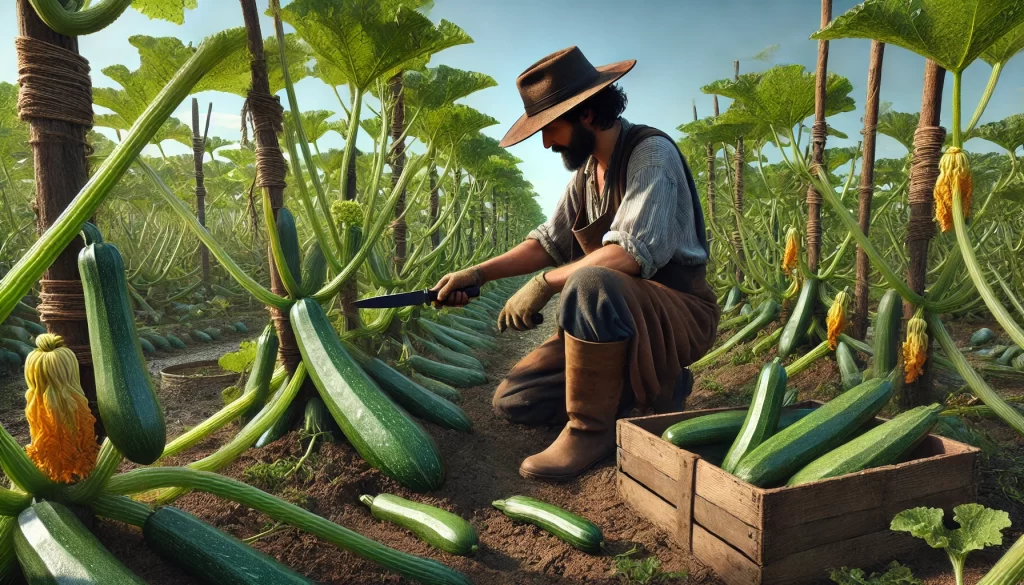
Post-Harvest Management
Post-harvest management is crucial to maintaining the freshness and quality of zucchinis until they reach the final consumer. The recommended practices include:
- Washing and Sorting: Remove impurities and sort the fruits according to size, color, and quality.
- Storage: Keep the fruits in a cool place, preferably at a temperature of 10-12°C, to prolong their shelf life.
- Transportation: Transport the fruits in ventilated boxes to avoid physical damage and preserve their quality during the transfer to the market.
 AgronoBlog – Agriculture Blog
AgronoBlog – Agriculture Blog